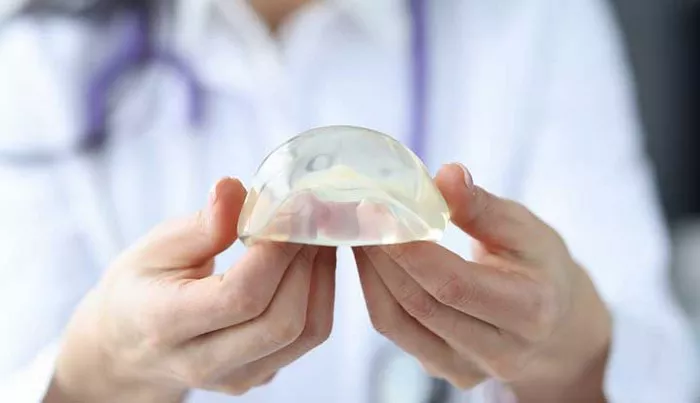Silicone breast implants have been a popular choice for individuals seeking breast augmentation or reconstruction procedures. While these implants are generally considered safe and effective, it is important to understand the potential side effects that may arise. In this article, we will explore the possible side effects of silicone breast implants, including both common and rare complications.
Understanding Silicone Breast Implants
Silicone breast implants are comprised of a silicone shell filled with silicone gel. They are used to enhance the size and shape of the breasts for cosmetic purposes or to reconstruct the breast after mastectomy or other breast-related surgeries. Silicone implants are known for their natural feel and appearance, and they are widely used by plastic surgeons around the world.
Common Side Effects of Silicone Breast Implants
-
Pain and Discomfort
t is common for patients to experience temporary pain, soreness, or discomfort after silicone breast implant surgery. This discomfort is typically managed with pain medication and diminishes as the healing process progresses.
-
Swelling and Bruising
Swelling and bruising in the breast area are common side effects after silicone breast implant surgery. These symptoms usually subside within a few weeks as the body heals.
-
Changes in Sensation
Some individuals may experience temporary or permanent changes in breast or nipple sensation after silicone breast implant surgery. Sensory changes can include increased or decreased sensitivity, altered nipple sensation, or numbness. In most cases, these changes resolve gradually over time, but it is possible for them to be permanent.
-
Capsular Contracture
Capsular contracture occurs when scar tissue forms around the implant, causing the breast to feel firm or hard. This complication can be uncomfortable and may require additional treatment, such as revision surgery or implant removal.
-
Implant Rupture or Leakage
While rare, silicone breast implants can rupture or leak over time. If a rupture occurs, it may result in a change in breast shape or size, and the leaked silicone gel may spread to the surrounding tissues. Silent ruptures, where there are no visible symptoms, can also occur. Regular monitoring through imaging techniques, such as MRI, is recommended to detect any potential implant issues.
Rare Side Effects of Silicone Breast Implants
-
Infection
Infection is a potential complication after any surgery, including silicone breast implant procedures. While it is relatively rare, infection can occur and may require antibiotic treatment or, in severe cases, removal of the implants.
-
Hematoma or Seroma
Hematomas and seromas are collections of blood or fluid that can form around the implant. These complications can cause pain, swelling, and potentially increase the risk of infection. If significant, they may require drainage or surgical intervention.
-
Breast Implant-Associated Anaplastic Large Cell Lymphoma (BIA-ALCL)
BIA-ALCL is an extremely rare form of lymphoma associated with textured breast implants, including textured silicone implants. This type of cancer develops in the scar tissue surrounding the implant. Symptoms can include swelling, pain, or a lump in the breast. BIA-ALCL is highly treatable when detected early, and most cases are cured by removing the implant and surrounding scar tissue.
-
Mammography Interference
Silicone breast implants may interfere with the detection of breast cancer during mammography. Special imaging techniques, such as additional views or ultrasound, may be required to ensure accurate breast cancer screening. It is important to inform the radiologist about the presence of breast implants before undergoing mammography.
Minimizing the Risks and Complications
While there are potential side effects associated with silicone breast implants, it is important to note that these complications are relatively rare. Many individuals undergo silicone breast implant surgery without experiencing any significant problems. To minimize the risks and complications associated with silicone breast implants, consider the following:
- Choose a Skilled Surgeon: Select a board-certified plastic surgeon with experience in breast augmentation procedures. A skilled surgeon can reduce the likelihood of complications and ensure optimal results.
- Follow Post-Operative Instructions: Adhere to the post-operative instructions provided by your surgeon, including proper care of the incisions, taking prescribed medications, wearing supportive garments, and attending follow-up appointments.
- Regular Monitoring: Regular follow-up visits with your surgeon are crucial for monitoring the condition of your implants and overall breast health. Routine imaging, such as MRI, can help detect any potential issues, such as implant rupture.
- Be Informed: Educate yourself about the potential risks and complications of silicone breast implants. Discuss your concerns with your surgeon, ask questions, and make an informed decision about the procedure.
Conclusion
Silicone breast implants are generally safe and effective, but they can carry potential side effects and complications. While most individuals do not experience significant problems, it is important to understand the potential risks involved. Common side effects may include temporary pain, swelling, changes in sensation, capsular contracture, and implant rupture. Rare side effects can include infection, hematoma or seroma formation, BIA-ALCL, and mammography interference. By choosing a skilled surgeon, following post-operative instructions, and seeking regular monitoring, you can minimize the risks associated with silicone breast implants and ensure the best possible outcome for your breast augmentation journey.


